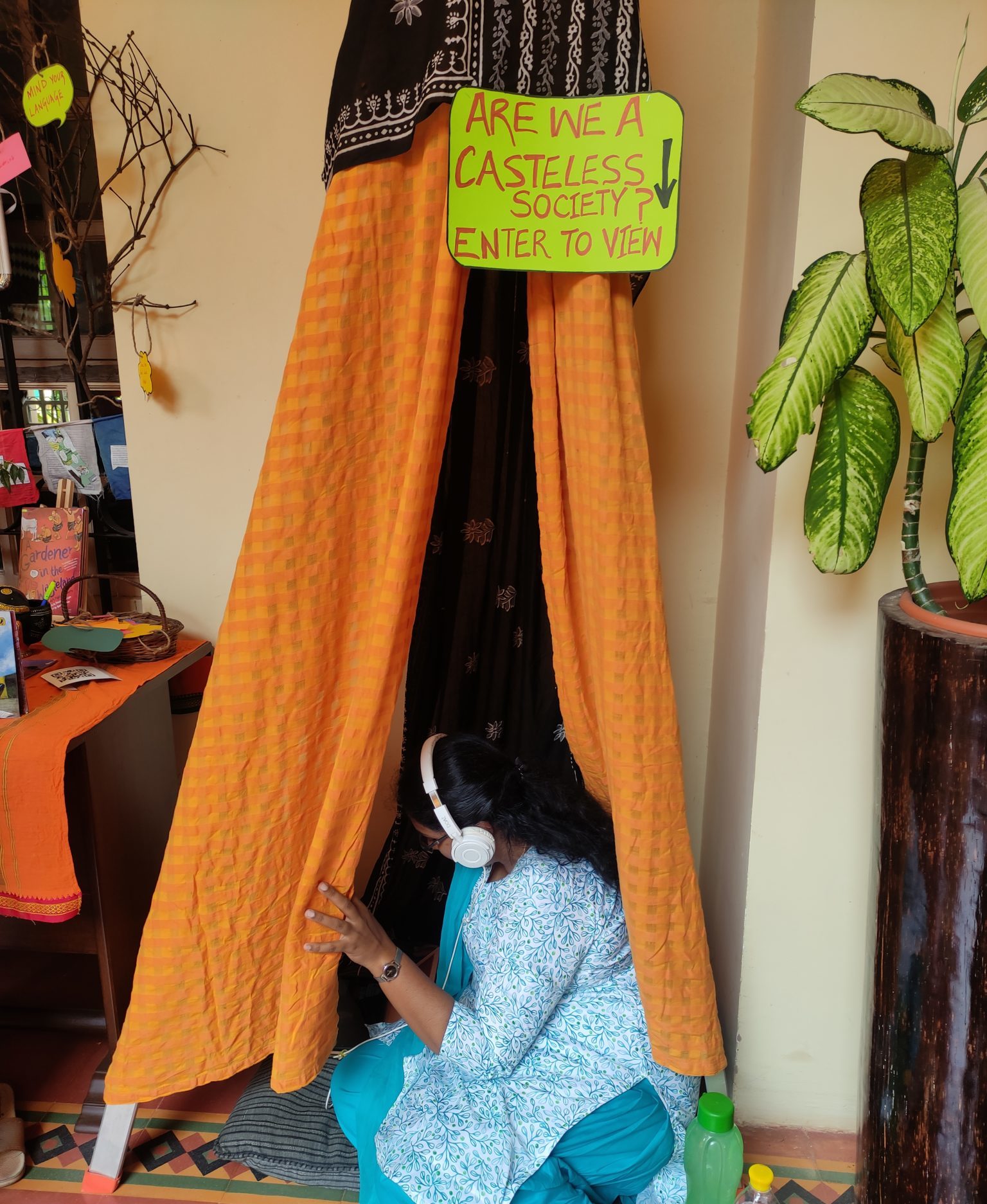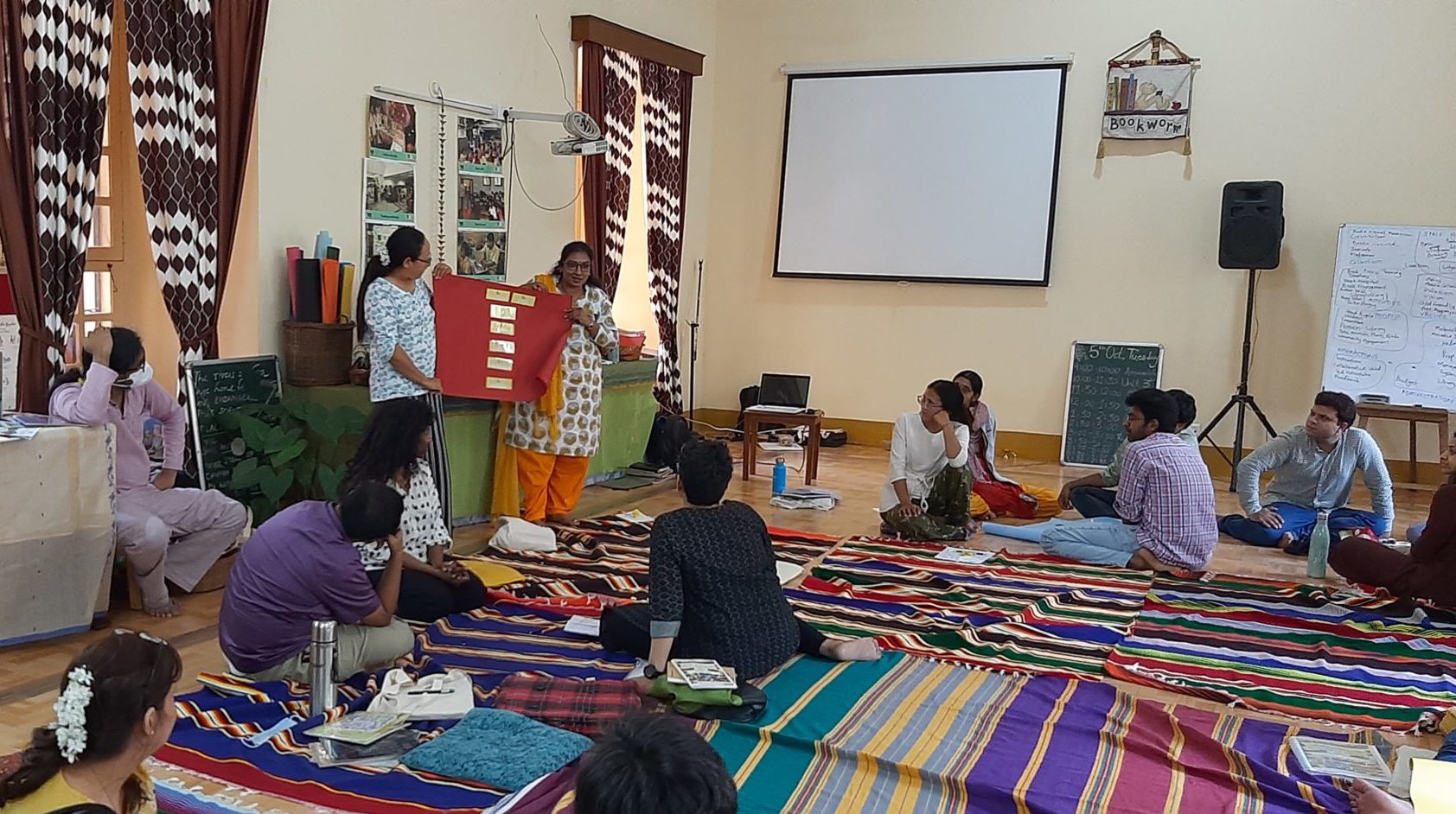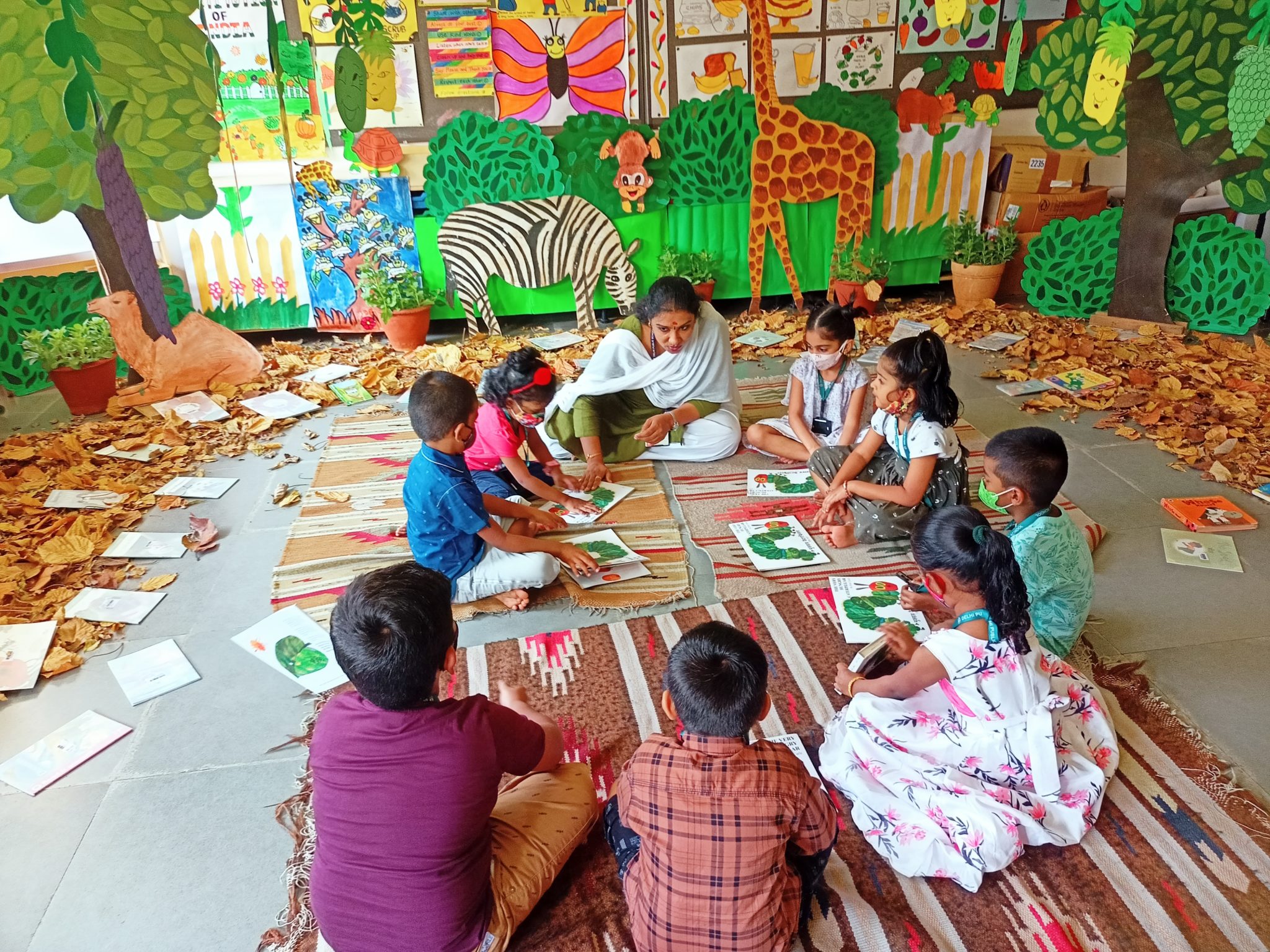Written by Poornima Natarajan, LEC 2021
As a Pre-Primary teacher, I thought my duties were preparing a fun curriculum that combines learning and playing for the children and stories were told to younger children as a part of a daily routine. I thought the classroom Library is a part of learning centres for kids. My journey with Bookworm started in 2021 and the Library Educators Course brought a paradigm shift in me about Libraries. I never thought that a library can be a place where children can find happiness, spread their imagination, and gain knowledge at their own pace and choice. Earlier I saw a book as a non-living thing that has a script. During the course, I recognised books to be living things that speak and the library as a growing organism. My view about the library, books, stories and librarians changed.
The library educator’s course, contact periods, reading materials and virtual sessions made me think about how libraries are more valued for the spaces and experiences that they create for the community. So how to make a lively library? How could this be demonstrated in action? How to create a social and interactive space? Searching for answers to these questions I understood from the course that a library is a place that needs to be open, friendly and pleasing in appearance because that is one way to draw users to the library. In a children’s library, it becomes even more crucial to make all facets of the library user-friendly and to enhance the joy that comes with reading.
The course learnings uncovered for me that to have an active library, the library person plays an important role. Only he/she/they who have a helpful attitude and growing knowledge about the collection can connect with the books and people coming to the library.
The activities conducted during the contact period opened up for me what are the main things that need to be included in the library to bring more readers and interest in reading. I imbibed knowledge about the collection, arrangement of books, display and activities to be included to make the library more vibrant.
I have got a deeper understanding of pedagogy and now I consider myself someone who supports students to become lifelong readers and learners. We should actively promote reading through various activities, be engaging and vibrant, up to date, we should be a reader ourselves, and maintain a friendly, helpful atmosphere for the students and other members. There is much more to learn in due course of time while exploring with children and books. I have started to implement some of the learning in my classroom and will continue to update myself and help my children.
MY FIELD PROJECT JOURNEY:
For the first time, I looked at the elements of a library – collection, people, interactions, activities, administration, space and values, through a refreshed, more critical lens and understood how the parts came together to become a whole. The sessions were an immersive experience. We were gently nudged to question the values associated with the library, re-imagine our space and activities, and review the gaps in our collection. Most importantly, we began to think of our users as the epicentre. What we put on our bookshelves, the objective behind every activity, the ambience we created in the library – all these made a strong impact on our readers. Hence, I understood when the library is an inviting, bright and colourful space, has a collection that entices youngsters to read, and has a library educator who is actively engaging with the users and the resources in multiple ways, it is vibrant and alive.
During a session on Bookworm’s Library Educator’s Course, I observed a session on the place of non-fiction in the library. In this, we opened out a paper, The classroom Library: A Place for Nonfiction, Nonfiction in its Place (Young, TA, Moss, B, Cornwell, L. 2007) that exposed certain preconceived ideas about this genre, and navigated my understanding of non-fiction into a more open one. Certain questions that this paper brought up, made me explore more deeply with my children through my field project.
So, I decided to explore non-fiction books with pre-primary children and it gave me tons of learning, and experiences, and triggered my thinking. My learning from my Field project with regards to non-fiction as a genre is that non-fiction books trigger many questions, hold answers for doubts and open up a new room for exploration and discussion. I look forward to expanding my exploration of non-fiction in the future with my children. Now I am not only a pre-primary teacher but also a Library educator. I hold a lovely responsibility of taking the books to younger children in a thoughtful way incorporating all that LEC had given me. Thank you Bookworm and team for shaping and guiding me. LEC 2021 team showed me a new vision for library work.
References
Young, T. A., Moss, B., & Cornwell, L. (2007). The Classroom Library: A Place
for Nonfiction, Nonfiction in its Place.




Beautiful article with rich experience.